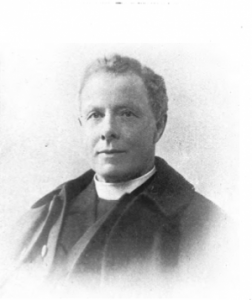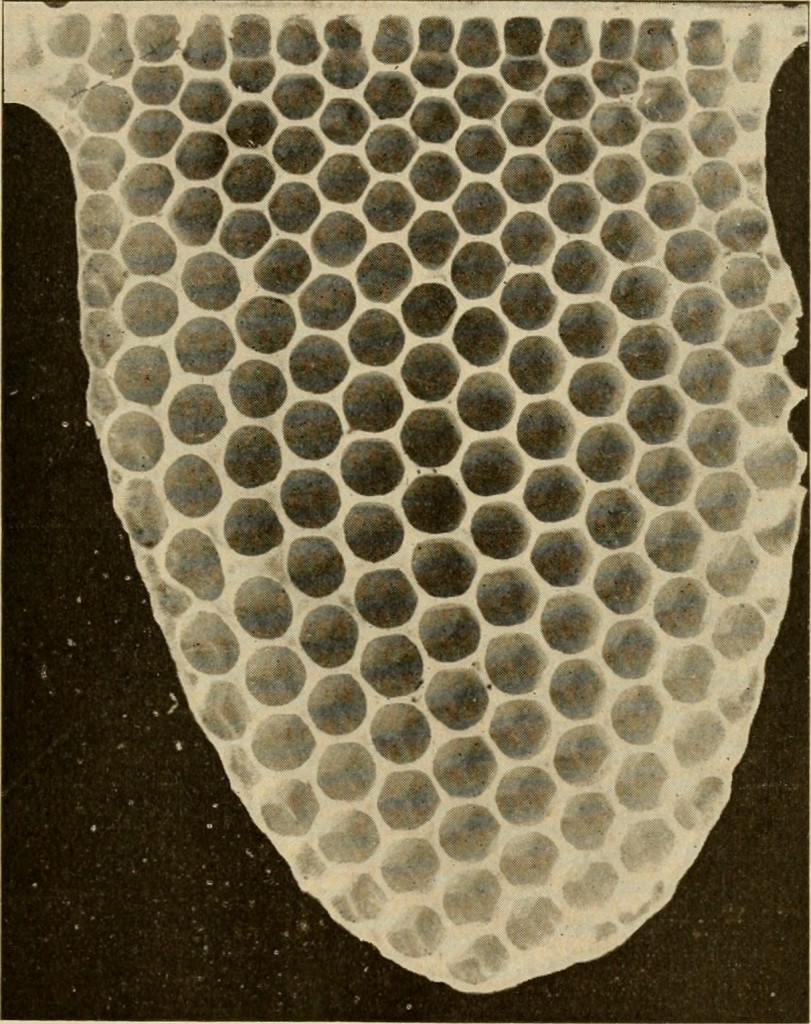The Reverend Joseph Garvan Digges, M.A.
(b 1858 d 1933). Ecclesiastic, Beekeeper, Organist and Composer.
Broadly considered the Father of Irish beekeeping and famously celebrated for his contribution to that subject, the experimental organ works of the late Reverend Joseph Garvan Digges have only recently come to light.
 Born in Dublin, Garvan Digges spent much of his life in Mohill, Co. Leitrim. He was the deacon in Kilmore, Co. Cavan, and then curate in Mohill until 1884. In 1885, he became the private chaplain to the Earls of Leitrim at their Lough Rynn estate at Mohill, serving Farnaght and Mohill churches and – from 1933 – the parish of Cloone. A grand organ in the church of St. Patrick in Mohill is recalled in Maothaíl Manachaín : Mohill re-membered, and though it was removed in the 1960s it is thought that its existence provided the necessary context for Digges to begin composing in his signature style.
Born in Dublin, Garvan Digges spent much of his life in Mohill, Co. Leitrim. He was the deacon in Kilmore, Co. Cavan, and then curate in Mohill until 1884. In 1885, he became the private chaplain to the Earls of Leitrim at their Lough Rynn estate at Mohill, serving Farnaght and Mohill churches and – from 1933 – the parish of Cloone. A grand organ in the church of St. Patrick in Mohill is recalled in Maothaíl Manachaín : Mohill re-membered, and though it was removed in the 1960s it is thought that its existence provided the necessary context for Digges to begin composing in his signature style.
Garvan Digges attended his first bee-keeping lesson in 1885 at Clooncahir and was chairman of the Irish Beekeepers Association from 1910 to 1921. He edited the Irish Bee Journal (from 1912 called The Beekeeper’s Gazette) published from May 1901 to October 1933. According to Christopher Winn, he was a conscientious editor and in 33 years of publication missed only 4 issues: the May 1916 issue was blown up on its way to the printers during the Easter Rising. Garvan Digges also published a book: The Irish Bee Guide, later renamed The Practical Bee Guide. A Manual of Modern Beekeeping, which came to be the standard text on the subject.
In terms of his compositional work, fellow beekeeping associates have testified in letters to each other and elsewhere that Garvan Digges was haunted by the question of whether or not bees could hear. Submitted as a note to Vol. 1 of The Irish Bee Journal, the following note seems to have provided one of the motifs that came to define the lugubrious and lengthy style of his signature improvisational style; a sense in his melodies (described by those who heard them) of a voice talking calmly and continuously, as if to reassure and pacify a restless hive:
“Can Bees Hear ? — A friend who “ kno’ what’s what” says that his bees can, that if you talk over them always they soon learn to recognise your voice, and there be no more stings, unless you crush them.”
In other areas of his improvisational organ work, it seems Garvan Digges was pursuing a kind of exultant menace, in homage to the sonic effects of bees for which the writing in his book shows a complex mix of terror and reverence:
“to the uninitiated there is something terrifying in the vicious buzzing of bees when they have their abdomens curved for the thrust, and the very air around them seems charged with venom. You cannot oppose your courage to theirs, for they are not amenable to the laws of civilized warfare, and they will fight with irresistible bravery, and will die a thousand deaths, if need be, in defence of their homes.”
Finally in looking to the bee-keeping texts of Garvan Digges for keys to his music, it is important to consider his insistence on “A Firm and Gentle Hand”.
There is a rumour that Garvan Digges did attempt to create recordable beeswax cylinders using beeswax gathered from his hives in hopes of playing his organ music back to them. It has been impossible to substantiate this since any cylinders which were produced have almost certainly been lost or melted. There is an old celluloid recording of an extremely time-stretched version of The Honeysuckle & The Bee which appeared in the inaugural edition of The Irish Bee Journal. In Garvan Digges’ realisation every cluster of notes is held down and repeated for an extended quantity of time with the adjacent sung portion of the song being nasally intoned. The effect is hypnotic and drone-like and bears some similarities to the much later works of Sr Anselme O’Ceallaigh. The Irish Bee Journal which contains The Honeysuckle & The Bee also describes how beekeepers might “sing into their hives while the hum of the workers gives promise of the harvest, and while still the war-like guards of the colony have to learn that music hath charms to soothe the savage breast!”
It is in such texts that Garvan Digges reveals the sensibilities that defined his music; it seems that he took solace in long, uninterrupted sessions of improvisation on the organ which enabled him to practice the special state of mind required to reign master over his bees and to process the complex and sometimes violent sounds which they produced.
SELECT BIBLIOGRAPHY
Digges, Rev. J. G. (1904). The Irish Bee Guide, Leitrim: Lough Rynn Press
Digges, Rev. J. G. (ed.) (1901 – 2). The Irish Bee Journal, Vol. 1. May 1901 – April 1902, p.18, p.126, p.38
Various. (2000). Maothail Manachain: Mohill re-membered, Mohill, Co. Leitrim: Mohill Jubilee Committee
Winn, C. (2006). I Never Knew that about Ireland, London: Ebury Press

